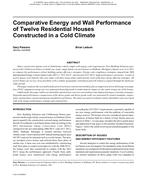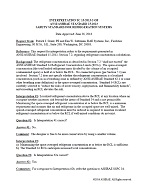Due to the need to reduce energy consumption for heating and cooling of buildings, it is desirable to be able to estimate the energy effect of certain design choices during the design process. To meet this need, and to seek compliance with energy budgets now part of some building codes, a number of special-purpose computer programs have been developed. These programs allow modeling of a large class of buildings and their energy systems. Typically, these programs allow the user to define a building envelope, the HVAC distribution (secondary) system, and the heating and cooling central plant equipment (primary system) in a fairly general way. Execution of the program causes simulation to be done over a specified period, using weather data recorded on magnetic tape and specified building usage patterns. The principal output is building energy usage, and the cost of this energy for the life of the building. Ref 3 provides an overview of these programs.
In spite of the significant improvement in the capabilities of these programs in recent months, a number of fundamental limitations remain. Two such limitations are inability to represent and model an arbitrary system, and inability to simulate optimal control. This paper presents a network. modeling approach for HVAC systems which has the potential of eliminating both of these limitations.
A review of these limitations is presented, as well as a description of the network representation. This is followed by a brief description of network. programming considerations, solution techniques and optimization methods. The method is exemplified by network, modeling and optimal control simulation of an actual building.
Product Details
- Published:
- 1981
- Number of Pages:
- 13
- File Size:
- 1 file , 1.1 MB
- Product Code(s):
- D-CI-81-03-4
- Note:
- This product is unavailable in Russia, Belarus


